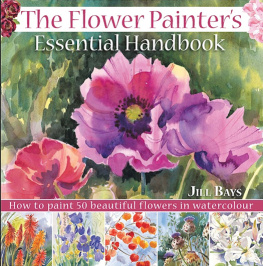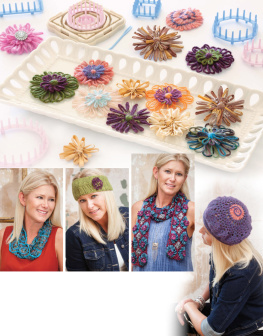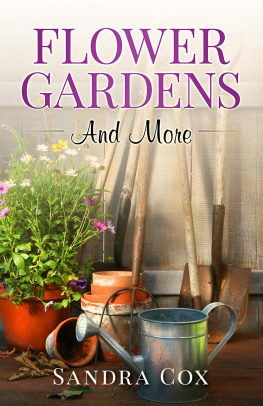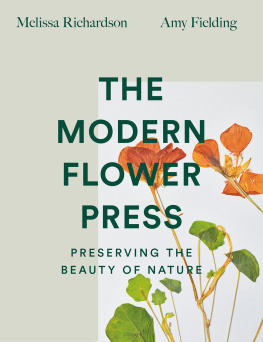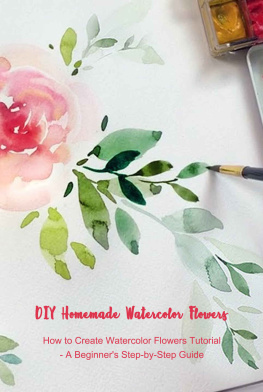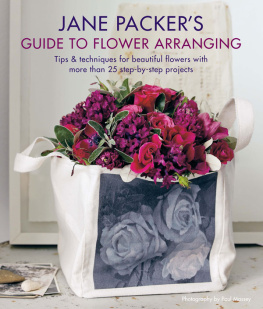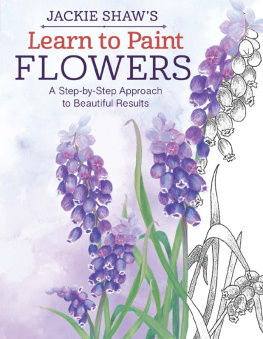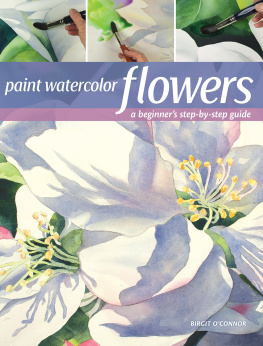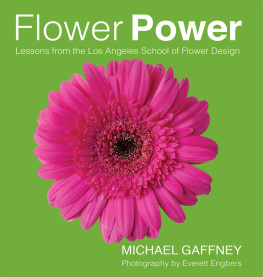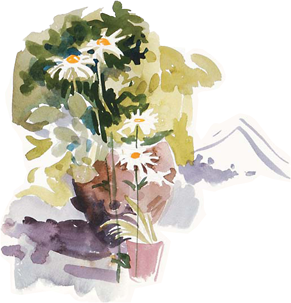The Flower Painters Essential Handbook
JILL BAYS
A DAVID & CHARLES BOOK
Copyright David & Charles Limited 2006
David & Charles is an F+W Publications Inc. company
4700 East Galbraith Road
Cincinnati, OH 45236
First published in the UK in 2006
Text and illustrations copyright Jill Bays 2006
Jill Bays has asserted her right to be identified as author of this work in
accordance with the Copyright, Designs and Patents Act, 1988.
All rights reserved. No part of this publication may be reproduced, stored in
a retrieval system, or transmitted, in any form or by any means, electronic or
mechanical, by photocopying, recording or otherwise, without prior permission
in writing from the publisher.
A catalogue record for this book is available from the British Library.
ISBN-13: 978-0-7153-2246-8 hardback
ISBN-10: 0-7153-2246-X hardback
ISBN-13: 978-0-7153-2248-2 paperback
ISBN-10: 0-7153-2248-6 paperback
Printed in Singapore by KHL Printing Co Pte Ltd.
for David & Charles
Brunel House Newton Abbot Devon
Commissioning Editor Freya Dangerfield
Project Editor Ian Kearey
Assistant Editor Louise Clark
Art Editor Lisa Wyman
Senior Designer Sarah Underhill
Production Controller Kelly Smith
Visit our website at www.davidandcharles.co.uk
David & Charles books are available from all good bookshops; alternatively you
can contact our Orderline on 0870 9908222 or write to us at FREEPOST EX2
110, D&C Direct, Newton Abbot, TQ12 4ZZ (no stamp required UK only); US
customers call 800-289-0963 and Canadian customers call 800-840-5220.
'Has anyone ever seen anything like Winsor & Newton's cups of Chrome
and Carnations and Crimsons loud and ferce as a war-cry, and Pinks tender
and loving as a young girl?' Charles Dickens
Contents
Introduction
Painting flowers is not just about creating a still life of some blooms in a vase or jar: it opens a whole new world of painting. Think of the variety of shapes, sizes and patterns, and the range of colours and settings you can explore. There are also many ways of painting, from being free and loose with the brush, to being a super-realist and painting every detail. However you feel, there is a way to achieve the result you want.
your subjects
Even in a small window box or tiny garden, there is an amazing variety of shapes and colours. As an artist, how do you go about selecting your subject? You are probably familiar with your own garden of plants, but even in this situation a lot can depend on outside factors such as light, heat, shade and the weather; and in public gardens, other people walking around can be distracting. Start by finding something that appeals to you immediately, and get the ball rolling by making small sketches of your subject.
There are various approaches to painting flowers and plants. You can choose to paint a close-up of a single subject, in isolation or with the hint of a further dimension, or you can go for the long view, a landscape interpretation that includes flowers or foliage. Keep your options open, and always make sketches to help get your thoughts in order and organize your priorities.
inspiration and challenge
When faced with a new subject to paint, you really should want to paint it, but sometimes inspiration doesnt come immediately, you should be open to becoming more interested as you paint. Dont be put off when this happens, as we can all get stuck in the same ways, and it can be difficult to break out
Look for the challenge that can come from investigating new shapes and forms, perhaps in a way you havent explored before. Using different paper and deviating from your usual colours can often inspire you to innovative approaches.
Sometimes painting in a completely free way going straight in with the brush without any preliminary drawing, for example can start you off. At other times, carefully thinking out your strategy beforehand can be useful: a considered still life and selection of colour combinations, with preparation in the form of colour roughs and drawings, can be a great help.
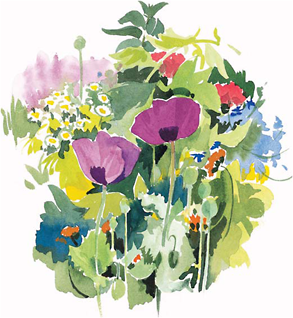
WATERCOLOUR VERSATILITY
This painting shows a variety of colours and applications; some paint is thick and dark, other washes are light and pale; some colours are painted straight on to the paper, while others are painted over one another.
working outdoors
If you are like me, then a great deal of your outdoor sketching is likely to take place in your own garden, or a garden or situation that you know well, so you become very familiar with its particular viewpoints and thus have plenty of time to think about the subjects you want to paint. Away from such familiar places, however you have to choose more rapidly.
Outdoor sketching is great fun: you have to gamble on the weather and be prepared for anything. Travel light and cut down on equipment, but always take something to sit on, a hat and sun cream. Go with the right attitude, be prepared to make lots of thumbnail sketches, and dont worry if you dont complete anything in situ.
a word about sketchbooks
A sketchbook is an essential part of your equipment use it for ideas, sketches, even painting. It is your primary source book, so carry it everywhere and make sure it is readily to hand. Some artists use their sketchbooks as a kind of diary, and draw in them every day.
There are many different sizes of sketchbook. I find one with A4 cartridge paper very useful for most purposes, and also have some containing heavier weights of watercolour paper, which are perfect for taking on holidays as they don't need to be stretched. Smaller books are excellent too as they can be slipped into a pocket or bag and used in crowded places. There is also a choice of bindings, the two most popular being spiral bound or pads with soft or hard covers. You could also make your own sketchbooks using your favourite papers, which will then become very personal records.
how to use this book
Starting with a brief look at the equipment available to you paper, paints, brushes and accessories I suggest a useful selection. The next section covers the basic techniques: the brushstrokes you can make, and how to create a variety of washes. The two fundamentals of watercolour painting are then illustrated working wet into wet and wet on dry. A study of flower shapes and patterns and the details of stems, leaves and grasses follows, with advice on colours and how to create them for flower painting. Tips and advice on light and shade and tone, two invaluable allies of the painter, conclude this section.
The main part of the handbook takes an in-depth look at 50 flowers, ranging from humble daisies to exotic orchids and luscious peonies. Each spread features drawings and sketch studies with pointers on what to look for; a watercolour study, again annotated; a palette of recommended colours and step-by-step instructions on how to paint the flower. To inspire your own work, a finished painting, in a style ranging from loose and free to more detailed, features the subject in a variety of approaches.

